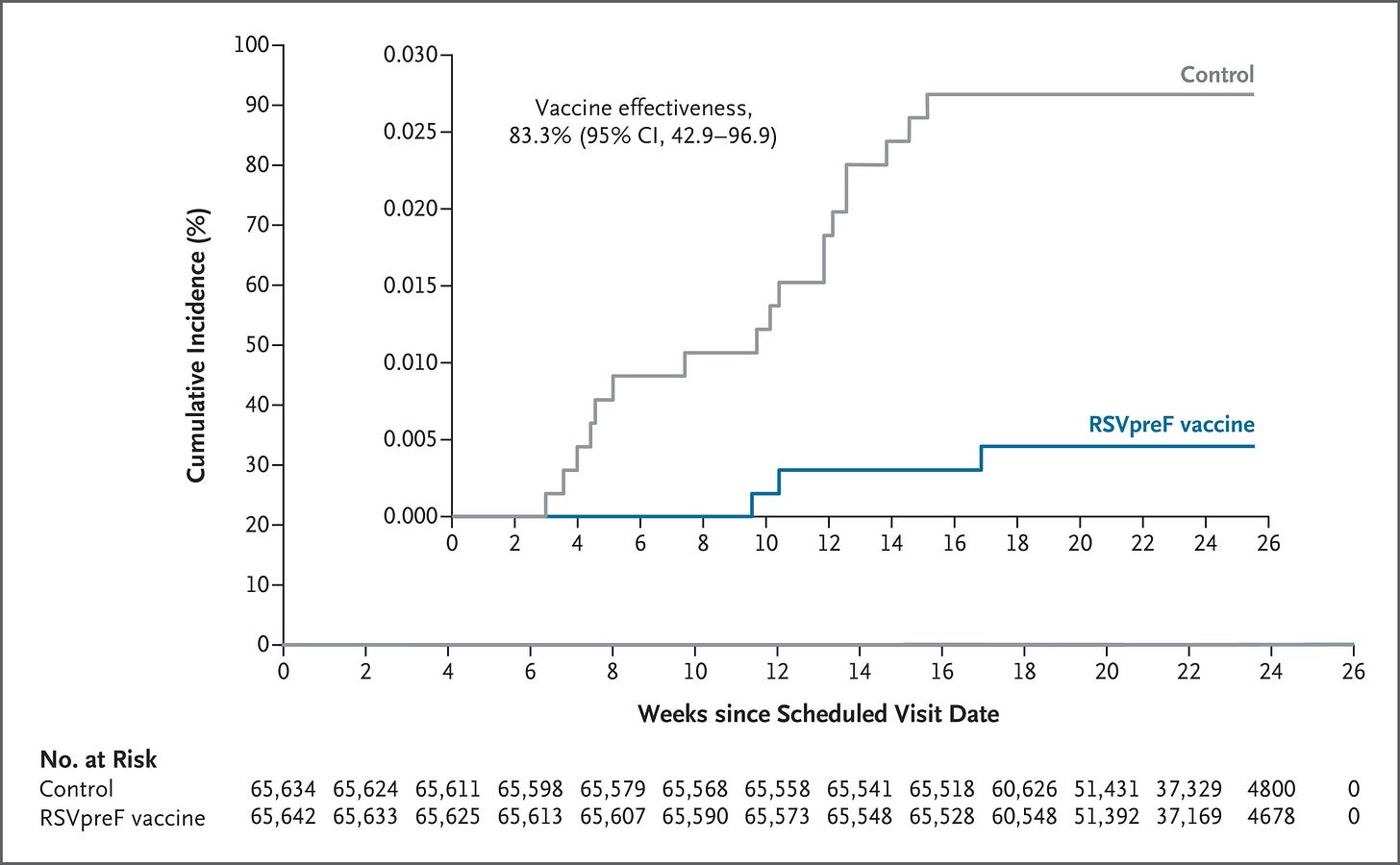The Vaccines of ESC25
RSV, influenza, influenza, and ... influenza, again!
The European Society of Cardiology conference isn’t just about cardiology, it turns out – it’s also about vaccines! (and their cardiovascular implications)
The first one is DAN-RSV. Vaccines work:
The trick is just how few RSV hospitalization events occurred in the control group – only 18 in 65,000. The RSV vaccine decreased that to 3 in 65,000. Larger absolute differences in all-cause respiratory admission were seen, 335 vs. 284. These are real numbers, but they are not large, impactful numbers. These results will likely be fodder for cost-effectiveness conversations within many health systems. No apparent safety signals were detected.
Then, you have three variations on DANFLU-2. You have the topline result – high-dose vs. low-dose influenza vaccines in the elderly, in which absolute differences in endpoints in the range of 0.05% to 0.15% were found. These were not sufficient to demonstrate superiority of the high-dose over the low-dose.
The other two reports looked at adverse effects, including general cardiovascular effects and, specifically, myocarditis or pericarditis. Consistent with the overall study result, any differences favoring high-dose were minimal. There were a handful of fewer pericarditis cases in the high-dose, as well as a handful fewer hospitalizations for heart failure. However, in the context of an overall neutral result for all-cause hospitalizations or death, a beneficial effect from the high-dose influenza cannot be reliably concluded.
It ought to be noted, as per usual, all these results bear the risk of bias from the ubiquitous heavy hand of their sponsor.

